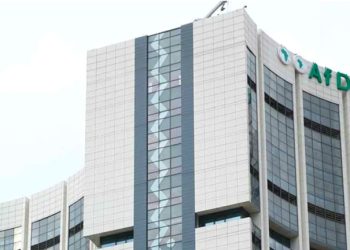
Namibia Water Corporation Ltd (NamWater) has unveiled plans for a large-scale desalination and power plant project along the central coast, with an estimated investment of N$4.2 billion. The project, which will be rolled out in phases, aims to enhance water security and power generation in the region.
Phase 1 of the project, encompassing the construction of a desalination plant, water carriage system, and associated infrastructure, is expected to cost N$3 billion, while the full-capacity plants, including the Gaingu PV power plant and associated infrastructure, will come in at N$4.2 billion.
“Although a significant portion of these costs will be incurred for imported components, local supplies of goods and services will be essential, generating direct, indirect, and induced local economic benefits,” according to the project’s socioeconomic specialist study.
The Environmental and Social Impact Assessment (ESIA) process, led by Environmental Assessment Practitioner SLR Environmental Consulting (Namibia) (Pty) Ltd, estimates that approximately 200 temporary jobs will be created during the construction phase. Furthermore, indirect and induced employment opportunities are anticipated to arise from the utilisation of Namibian and Southern African Development Community (SADC) products and services.
“The primary objective of the project is to deliver potable water, desalinated from seawater at the coast, to the central coastal area through the existing water transmission system. The development plan involves the construction of a new 4km water pipeline connecting the desalination plant to the Omdel-Swakopmund pipeline, with a total capacity projected to reach 36.2 million m³ per annum,” stated the ESIA notice.
In addition, SLR notes that the project proposes the establishment of a photovoltaic (PV) solar installation with a cumulative capacity of 35.10MWp, known as the Gaingu PV Power Plant.
“This solar facility will not only provide power to the desalination plant and pump station but also contribute to the broader energy grid. A new 33kV transmission line will connect the Gaingu PV Power Plant to the existing New Khan substation,'” noted the firm.
The draft ESIA report outlines that about 50 people will be required to operate the desalination plant during its operational phase.
The report suggests a Design-Build-Operate-Transfer (DBOT) model of ownership, aligning with NamWater’s objective to minimise construction and operation risks while maximising efficiency. A similar model is proposed for the Gaingu PV Power Plant, with the engagement of an Independent Power Producer.
This project comes as declining underground water reserves in the coastal area are putting immense pressure on NamWater to maintain uninterrupted water supply. The desalination plant is set to supply towns such as Henties Bay, Swakopmund, and Walvis Bay, Arandis, Uis, and settlements in Daures, with aspirations for water supply to the capital city, and in the long run, Botswana.
This large-scale infrastructure project is expected to significantly enhance water security and power generation in the central coastal region of Namibia, addressing the growing challenges of water scarcity and energy demand. The project also holds the potential to generate substantial economic benefits through job creation and local procurement opportunities.











